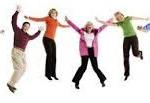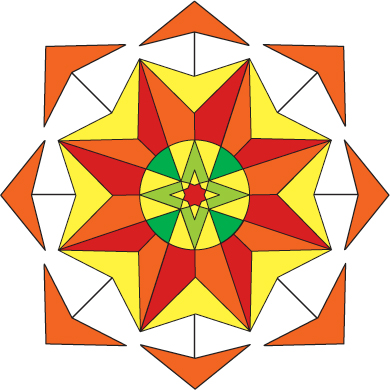
Osteoarthritis can manifest as dull aching pain, worse with weight bearing activity and can happen in just one joint or in many joints.
Osteoarthritis (OA) is a degenerative disease that effects us all to some degree as we age because it results from use of joints! Wear and tear causes cartilage to break down in the joints, which allows the bones to rub together, potentially resulting in bone spurs, stiffness, and pain. As my professors used to say, if you are lucky enough to live long enough, you will develop some OA! This is very different than Rheumatoid Arthritis (RA) which is an autoimmune disease which we will talk about later in the month.

Osteoarthritis can be painful, but should not restrict activity. In fact, moving helps limit the progression of the disease.
OA can be particularly painful around weight-bearing joints of the hips and knees. For a look at OA effects on the upper body’s limbs, shoulders and neck check back next week! Acupuncture has been proven to be very helpful with limiting the symptoms and progression of OA. Our Chinese herbal medicine can be very helpful as well, particularly with flare ups that arrive with seasonal wind, damp and cold weather!
For OA in the hips and knees there are some key factors to maintaining the joint:
- Flexibility and range of motion: maintain balance and prevent injuries
- Weight-bearing cardiovascular activity: keep bones strong and circulation optimal
- Muscle strengthening activity: support the joints with strong muscles, ligaments and tendons
Exercises to Avoid With OA of the Knee or Hip:
- Running and jogging
- Jumping rope
- High-impact aerobics
- Any activity where, at any time, you have both feet off the ground at once, however briefly
Walking, Recumbent Bicycle, Swimming, = Great Cardio choices for people with osteoarthritis of the knee and hip. Really, it’s anything that you can tolerate without excessive pain and that gets your heart rate up to a healthy rate. It may be uncomfortable to walk, but it is vital to preventing further deterioration of the joints. While doctors used to recommend rest and restricting mobility for OA, they found that this immobilization caused the disease to progress more rapidly!
Taking a brisk walk reinforces mobility and can help to reduce pain in the long term. If walking is too painful, try a recumbent bicycle. Recumbent bikes extend the angle of the joint so that the knee and hip aren’t flexing so much with each rotation, which might cause less strain and pain.
For many folks, the swimming pool is the best option. A heated pool is required, because cold water can exacerbate arthritic joints. Swimming does not the benefit of strengthening bones that weight-bearing exercise provides, so does not help prevent bone loss, so strength training is a necessary addition.
Strength Training
When we strengthen the muscles that surround the joints we support the joints, alleviating some of the load they carry and thereby relieving some pain.
Connective tissue is there to hold joints together. When you strengthen the muscles surrounding and supporting the joint, you can relieve some of the symptoms.
Low impact, gentle exercise like tai chi and gentle yoga develop balance – an important aspect of preventing falls and maintaining brain health as we age!
Staying Flexible: Focus on Range of Motion
There are a ton of specific exercises that you can do, designed to be easy for people with osteoarthritis, to increase your flexibility and range of motion around your knees and hips. Here are a few, but always consult a professional in person before engaging any new exercise routine.

OA most often effects the weight bearing joints or those with the most articulations – movement in relation to other bones.
Generally, activities are to be done without force and in such a way that bring the hips and knees through their full range of motion, allowing the joint to “lubricate itself”. These stretching exercises can be done in a pool, or on a mat near a wall for support.
- Leg swings. Simply hold onto the edge of the pool, or the wall if you’re on land, and gently swing your leg out to the side, alternating sides.
- Leg extensions. In the same position, extend your leg gently backward, alternating legs. Be sure you do not overarch your back as you extend the leg behind you, causing back problems. Standing on a phone book or low step can be helpful to allow the foot to swing without hitting the floor.
- Hip Extension. Using the back of a chair to balance yourself, bend forward and lift your right leg straight behind you. Lift the leg as high as possible without bending your knee. After holding the position briefly, lower the leg slowly. Repeat with your left leg and try to complete this four to six times.
- Hip and Lower Back Stretch. Lie down on your back with legs outstretched. With your neck on the floor, turn your chin toward your chest. Bend your knees and hold them with your hands. Pull your knees toward your shoulders as far as you can. Take a deep breath and bring your knees higher as you exhale.
- Double Hip Rotation. Lie down on your back, with knees bent and feet flat toward the floor. With your shoulders on the floor, slowly lower your knees to one side while turning your head to the other. Bring knees back and repeat on the opposite side.
Please remember, if your pain increases, stop and rest.
Increase your activity level throughout the day by walking whenever possible. Walking is always good for OA, just do not over do it!
Remember, if you need help reducing pain of OA, schedule an appointment for Acupuncture and ask if an herbal formula or supplementation is right for you!
References:
http://www.healthline.com/health/osteoarthritis/hip-exercises-treatment#3
http://www.webmd.com/osteoarthritis/features/knee-hip-exercises
